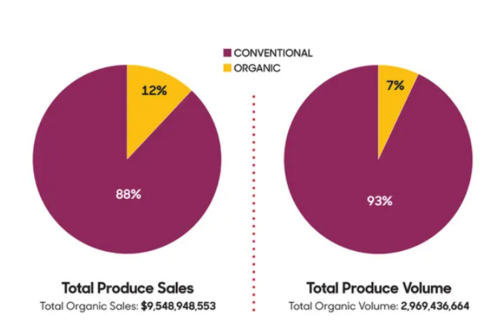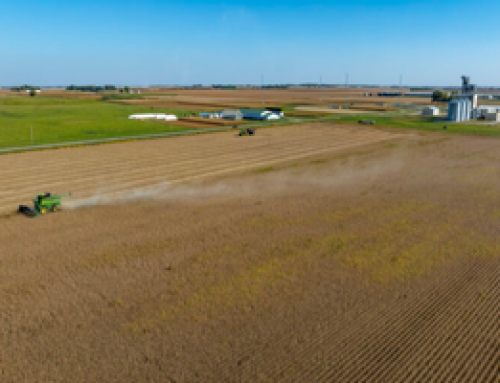Source: Organic Produce Network staff
In 2024, organic fresh produce experienced a remarkable year, with sales reaching $9.5 billion–an increase of 5.7% from the previous year. Once again partnering with Category Partners, Organic Produce Network has compiled an annual report, State of Organic Produce 2024, showcasing the top-performing organic produce categories, plus key factors influencing sales of organic produce.
Organic now comprises 12% of total retail produce sales and 7% of overall produce volume, reinforcing its expanding influence in the market. Organic produce volume grew by 6.1%, surpassing the 2% volume growth of conventional produce. Across all four U.S. regions, organic produce sales saw year-over-year gains, with the South leading at 7.2% growth.
Top-performing categories
Organic berries led in sales for the third consecutive year, reaching $1.857 billion–a substantial 11.8% increase from the previous year. With 268 million pounds sold, berries ranked third in volume behind bananas (613 million pounds) and apples (281 million pounds). Packaged salads followed berries with $1.446 billion in sales, while apples ranked third at $708 million. Notably, organic berries maintained a 66.6% price premium over conventional counterparts, reflecting strong consumer demand.
Top 10 organic produce categories by sales:
Berries – $1.857B
Packaged Salads – $1.446B
Apples – $708M
Herbs & Spices – $494M
Bananas – $492M
Carrots – $446M
Lettuce – $382M
Potatoes – $354M
Tomatoes – $333M
Citrus – $303M
Top 10 organic produce categories by volume:
Bananas – 613M lbs
Apples – 281M lbs
Berries – 268M lbs
Carrots – 257M lbs
Packaged Salads – 180M lbs
Potatoes – 177M lbs
Citrus – 106M lbs
Onions – 102M lbs
Herbs & Spices – 94M lbs
Lettuce – 90M lbs
Retailer and wholesaler insights
Despite ongoing inflation, its impact on organic sales was less severe than in 2023. Climate-related disruptions, however, posed increasing challenges for supply and pricing. Retailers responded with strategies to maintain competitiveness, such as improving consumer education and ensuring organic options remained attractive.
Competitive pricing and premium product presentation remain crucial factors in driving organic sales. “While organic pricing doesn’t need to exactly match conventional produce pricing, it should be competitive enough to entice shoppers to opt for the organic option,” notes Tom Barnes, president and CEO of Category Partners. Meanwhile, shifting shopping behaviors favor organic produce, as Jonna Parker, team lead for fresh foods at Circana, observes: “People shopping ‘just in time’ are making more trips to stores for fewer things, and produce is making it into the baskets on those small trips.”




